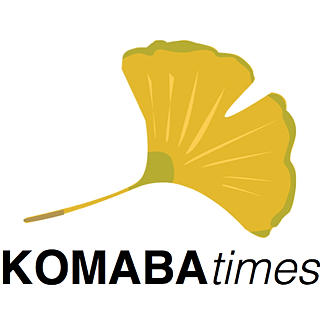A New Year's Eve with Kohaku
- Komaba Times
- Apr 24, 2017
- 3 min read
Updated: Oct 18, 2019
By ERIKA NAKAYAMA
“What do Japanese people typically do on New Year’s Eve?” What would come to your mind if you were asked this question? Some might say cleaning the house thoroughly. Some might think of visiting temples to wash off the bad things that happened during the year. Others might mention eating Soba and wish for longevity. My answer, however, would be Kohaku-Utagassen (Often called just Kohaku).
Kohaku-Utagassen, or Kohaku meaning the celebratory colors used in Japan, “red and white,” and Utagassen meaning “song battle,” is an annual musical event televised by NHK, the public broadcasting network in Japan, on New Year’s Eve. Each year, singers with the hit songs from that year compete in two teams which each consist of approximately 25 singers or groups. Red is for women and white for men. It started in 1951 and is celebrating its 65th anniversary this year.

A family gathering around TV for watching Kohaku. Drawing by author.
In the show, which goes on for 4.5 hours, singers with songs from all genres―from the traditional folksong, Enka, to modern Japanese pop music―each come out on stage and sing their song of the year. It also includes special sections that have backstage interviews and features songs connected to a certain theme such as a popular drama or movie. The winning team is decided by vote, which is done not only by 10 “people of the year” assigned as judges by NHK, but also by those who are invited to the concert hall where the program is recorded and those who are watching the program through TV, radio, and smartphones.
Along with the “Record Awards”, which is also a music TV program broadcasted on New Year’s Eve, Kohaku has long been watched by the majority of the Japanese population, more than 80 percent in the best of times in its long history, according to the survey conducted by Video Research Ltd. Kohaku was considered a national event, and was almost always at the center of the holiday family reunion, bringing families together around the TV and giving them a chance to spend time together. Yuji Yasui, a critic, states, “from 1951 to the end of 1980s, the ‘normal’ and the most fun way to spend New Year’s Eve for most Japanese was to get together with family members and watch Kohaku,” describing the popularity of Kohaku in its golden age. (2012, my translation)
But now, also according to Video Research Ltd. (2013), less than half of the population watch Kohaku. Although the program ratings are over 40% and are still higher than regular TV programs which usually record 10-20%, other New-years-eve programs are beginning to exceed Kohaku’s ratings.
This reflects the process in which the preference of Japanese people has become diversified. When Kohaku was first broadcasted and went through its golden age, a limited selection of music or fashion were likely to be exposed to the public repetitively. Therefore, as evident in the major hit of Hibari Misora in the 1960s and of idol singers such as Seiko Matsuda in the 1980s, once something became popular, most of the population followed that trend. However, after more than 60 years since Kohaku started, people have more options, and consequently, people’s interest have become diverse.
A survey of people’s preferences, conducted by NHK (2007, my translation), shows that recently, “it is more unlikely that there is ‘something everybody likes the same’ or ‘something nationally popular’ appears.” Although fashion still come and go, there is no longer a dominant trend in society. Kohaku, along with the diversification of the selection of TV channels, also ceased to be the “only” thing people watched and people started to substitute it with other programs.
But, for me, New Year’s Eve is not complete without Kohaku. Kohaku remains a precious opportunity to look back on the passing year through the songs that represents it. Furthermore, it is one of our family occasions just like celebrating Christmas or Thanksgiving. We spend our time together sitting around the TV and have happy chats. I am already looking forward to this day, for this year will be no exception.
<References>
1. NHK. (2007). Census on Society and Politics. Retrieved December 18th, 2014, from http://www.nhk.or.jp/bunken/summary/yoron/social/024.html
2. Yasui, Y. (2012, January 4). Thinking about NHK’s Kohaku (1): The Change of its Program Ratings and the Society. Retrieved December 18th, 2014, from http://www.quon.asia/yomimono/business/global/2012/01/04/2995.php
Originally posted on Dec. 22, 2014





Comments